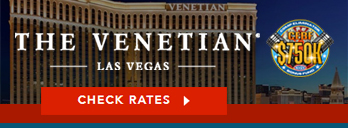RACE NO. 1 IN THE ROAD TO 500 WAS STEVE JOHNSON'S DEFINING EXPERIENCE
 When Steve Johnson rolls into the waterbox for his burnout to begin his 500th race at the NHRA Sonoma Nationals today, he likely won’t be reminiscing that he made it this far. Instead, he’ll be amazed that he survived race No. 1.
When Steve Johnson rolls into the waterbox for his burnout to begin his 500th race at the NHRA Sonoma Nationals today, he likely won’t be reminiscing that he made it this far. Instead, he’ll be amazed that he survived race No. 1.
Johnson made his professional debut at the 1987 NHRA Summernationals in Gainesville, Fla., and did he ever make a first impression.
There were rows of high-dollar haulers, pits comprised of rows of toolboxes, and a plethora of crewmen to use them. Then there was Steve Johnson, with his pits tucked away in the corner of Old Bridge Township Raceway, his bike shipped in a crate and tucked away under a flatbed trailer.
“It was all about one race, man,” Johnson said, voice cracking in near laughter. “It really was. It was like we were street racers, and we were extremely enthusiastic about motorcycles, and then all of a sudden, we had an engine. I had an engine for, I don’t know, over a year, a Vance & Hines engine, and a Pro Stock engine, but I had no motorcycle to put it in. That’s weird even to say. We didn’t even have a motorcycle to put it in.”
Johnson said there were few top-of-the-line chassis, and while there was Gen1 or Gen2 in some body designs, his was as primitive as one could get.
“Back then, you could have a stock chassis and a long swing arm,” Johnson added. “In theory, if you could ride the bike, it would be a Pro Stocker. That’s hilarious, actually. But yeah, we were racing, doing whatever we were doing.”
When the NHRA summoned the bikes to the staging lanes, there was legend after legend. There was Terry Vance, Dave Schultz, John Myers, “Pizza” John Mafaro, and then there was Johnson. The one thing that put them all on a level plane with Johnson was that they all parked in the dirt.
“There was a flatbed trailer, and they put my crate underneath the flatbed trailer,” Johnson explained. “So when it started raining, it rained over there, believe it or not, and we all just crouched under the trailer. Then we left the box open, and out of the box, we had two orange extension cords and tools. We didn’t even have a toolbox. We just had tools.”
With the leadership of Vance and Schultz, the early Pro Stock Motorcycle competitors were fighting for their place within the overwhelming NHRA community with a professional appearance in uniforms and equipment. Then there was Johnson, who was just happy to be there.

“The funniest thing of the whole story is when we were all done, we were all proud, we were all happy, especially after we qualified, and then we won the first round,” Johnson explained. "We forgot one important detail."
While winning his first career round of the NHRA competition and finishing as a quarter-finalist, it quickly resonated with Johnson that he had an even more significant issue looming.
“We were all done, we’re like, shoot, we never thought about how to get the bike back,” Johnson admitted. “That never crossed our mind.”
Enter Paul “Torch” LeSage, whose diplomatic attributes eventually made him Oakley founder Jim Jenard’s “Voice of Reason,” [according to Johnson] negotiated with Blaine and Alan Johnson to put the Johnson’s crate in their hauler and bring it to California with them,
“They literally put it on the stairs in their big rig and wedged a whole bunch of towels and crates and seats and chairs, and they just wedged a whole bunch of stuff and it sat on the stairs going up into the lounge all the way from Englishtown, New Jersey to Bakersfield, California,” Johnson declared. “I don’t even think Alan likes to talk about that. It’s embarrassing.”
Johnson believes he made it to the milestone by being persistent and determined.
“I always tell people if you go to all the races in a year, for 34 years, you’ll have 500 races too,” Johnson surmised.






































